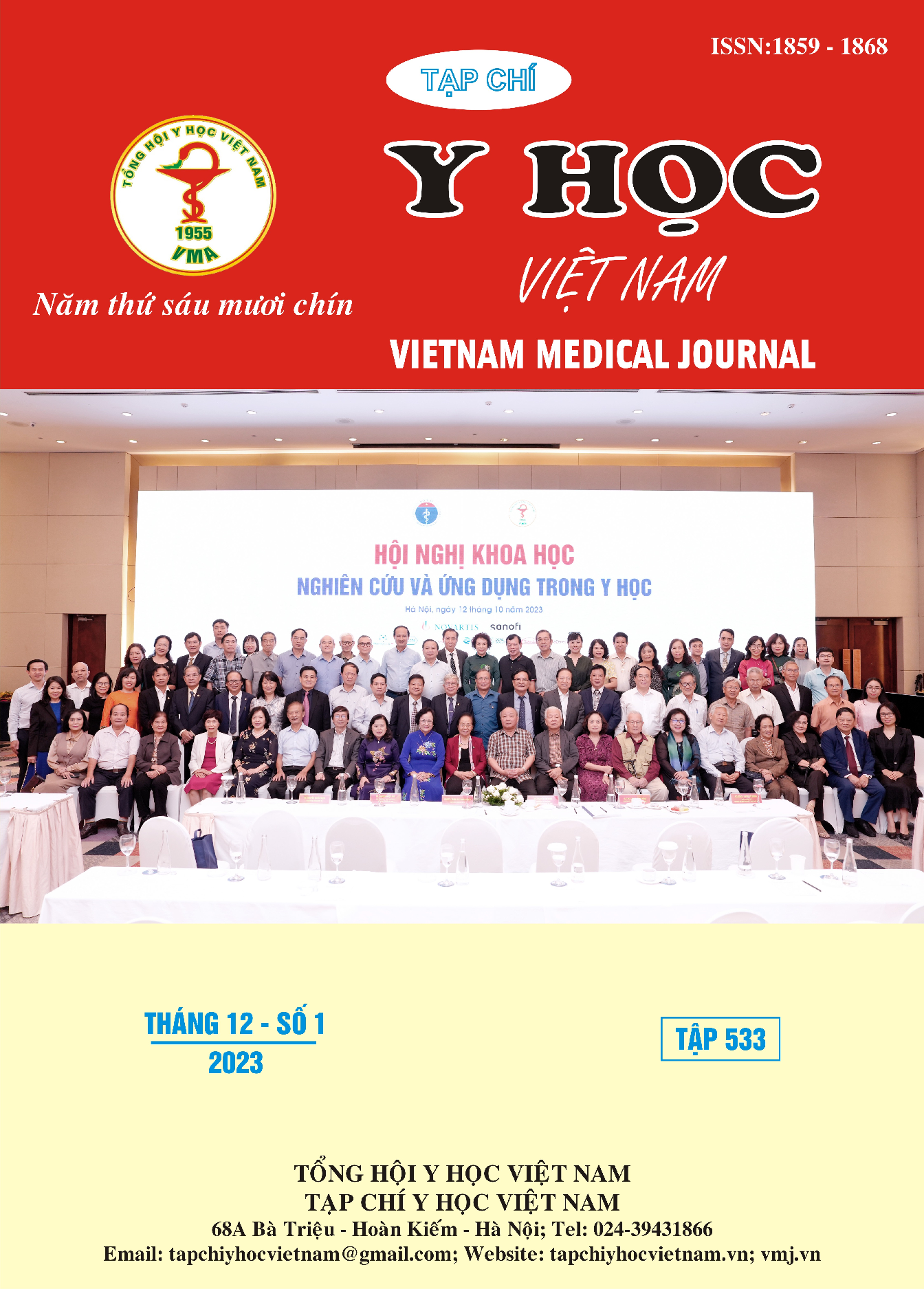EVALUATION OF THE TREATMENT OUTCOME OF THERAPEUTIC HYPOTHERMIA IN PATIENTS WITH CARDIAC ARREST DUE TO CARDIOVASCULAR CAUSES
Main Article Content
Abstract
Target: The study aimed to evaluate the treatment outcomes of hypothermia therapy in patients with cardiac arrest as the underlying cause. Methods: This cross-sectional retrospective study analyzed the medical records of a total of 35 patients who experienced cardiac arrest due to cardiac causes from May 2015 to December 2018. Results: The mortality rate of patients at the time of discharge was 40%, which increased to 48.6% after 30 days. The proportion of patients with good neurological recovery at discharge was 37.1%, and it increased to 40% after 30 days. The lactate levels decreased from 7.5 ± 3.6 (range: 0.6-16.6) mmol/L at admission to 7.2 ± 3.7 (range: 1.5-16) after hypothermia therapy. Blood gas parameters showed the following changes: at admission, the average pH was 7.2 ± 0.1 (range: 7.1-7.5), and HCO3 was 16.6 ± 3.6 (range: 9.9-27.1). At the end of the hypothermia phase, the pH averaged 7.4 ± 0.1 (range: 7.2-7.6), and HCO3 averaged 21.2 ± 3.6 (range: 11.5-26.4). Conclusion: The study results provide data on the current mortality rates of patients, serving as a basis for deciding on hypothermia therapy for patients with cardiac arrest as the underlying cause.
Article Details
Keywords
hypothermia therapy, cardiac arrest, cardiac causes.
References
2. Sharabi A.F. and Singh A. (2022). Cardiopulmonary Arrest In Adults. StatPearls. StatPearls Publishing, Treasure Island (FL).
3. Hypothermia after Cardiac Arrest Study Group (2002). Mild therapeutic hypothermia to improve the neurologic outcome after cardiac arrest. N Engl J Med, 346(8), 549–556.
4. Ko P.-Y., Wang L.-L., Chou Y.-J., et al. (2019). Usefulness of Therapeutic Hypothermia to Improve Survival in Out-of-Hospital Cardiac Arrest. Acta Cardiol Sin, 35(4), 394–401.
5. Cổng thông tin Bệnh viện Bạch Mai Bệnh viện Bạch Mai - Hội nhập và Phát triển (2011-2016). Truy cập ngày 19/09/2022. Tại trang web: .
6. Vattanavanit V. and Bhurayanontachai R. (2016). Clinical outcomes of 3-year experience of targeted temperature management in patients with out-of-hospital cardiac arrest at Songklanagarind Hospital in Southern Thailand: an analysis of the MICU-TTM registry. Open Access Emerg Med OAEM, 8, 67–72.
7. Hoang B.H., Do N.S., Vu D.H., et al. (2021). Outcomes for out-of-hospital cardiac arrest transported to emergency departments in Hanoi, Vietnam: A multi-centre observational study. Emerg Med Australas, 33(3), 541–546.
8. Bernard S.A., Gray T.W., Buist M.D., et al. (2002). Treatment of comatose survivors of out-of-hospital cardiac arrest with induced hypothermia. N Engl J Med, 346(8), 557–563.
9. Vũ Đình Kiên (2017), Đánh giá tình trạng đông cầm máu ở bệnh nhân ngừng tuần hoàn được điều trị soát thân nhiệt theo đích tại khoa cấp cứu Bệnh viện Bạch Mai, Luận văn Thạc sỹ Y học, Đại học Y Hà Nội, Hà Nội.
10. Hà Thị Bích Vân, Bùi Tất Luật, Hà Thế Linh, et al. (2019). Một số đặc điểm lâm sàng, kết quả cấp cứu người bệnh ngừng tuần hoàn ngoại viện tại Bệnh viện đa khoa tỉnh Phú Thọ. Tạp Chí Y Học Việt Nam, 482(Số đặc biệt), 31–36.


